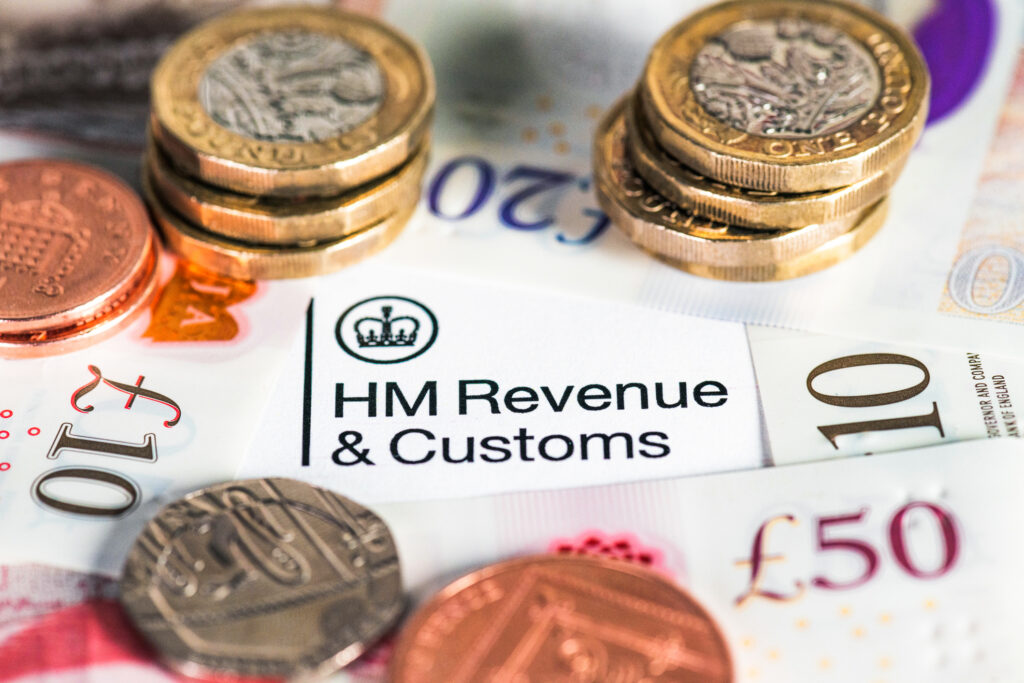Inheritance Tax Receipts reach £6.8 billion in the months from April to February, up £400 million

A collection of modern British banknotes surrounding the HM Revenue & Customs heading on a UK Government tax form.
Figures released by HMRC today show that the Treasury raked in £6.8 billion in inheritance tax receipts in the eleven months from April 2023 to February 2024. This is £400 million more than in the same period a year earlier.
The government’s inheritance tax take seems to be increasing thanks largely to years of house price increases, especially in London and the south-east, pushing families that probably wouldn’t consider themselves wealthy, over the inheritance tax threshold. The revenue generated plays an important part in the government’s spending programme.
For those that are picking up the ‘death tax-tab’, Wealth Club calculations suggest the average bill could increase to £240,000 this 2023/24 tax year, with over 31,000 families having to hand over part of their inheritance to the taxman. This would be a steep 12% increase from the £214,000 average paid just three years ago and a 15% rise in the number of estates paying the tax.
Nicholas Hyett, Investment Manager at Wealth Club said:
“One in every 25 estates pay inheritance tax, but the freeze on inheritance tax thresholds, paired with inflation and decades of house price increases is bringing more and more into the taxman’s sights.
No one likes to pay more tax than they need to, and Inheritance Tax is among the least popular of all taxes. But with a little planning, there are a number of perfectly legitimate ways to reduce your liability – including some that should be front of mind as we approach the end of the tax year.
Gifting is a tax gift that can keep on giving.
Every tax year you can give up to £3,000 away tax free. The allowance resets every year, although if you didn’t use it last year you can combine it and pass on £6,000 this year. It’s also possible to give up to £250 each year to however many people you wish, and make wedding gifts of up to £5,000 to your child; £2,500 to your grandchild; £2,500 to your spouse or civil partner and £1,000 to anyone else.
Beyond these annual allowances, you can pass on as much as you like IHT free so long as you live for at least seven years after giving money away.”
Steps you can take to reduce your IHT bill before end of tax year deadline
Every tax year you can give up to £3,000 away tax free. This is known as the annual exemption. If you didn’t use it last year, you can combine it and pass on £6,000. The allowance resets each tax year on the 5th April.
The small gift allowance means you can give away as many gifts as you like of up to £250 per person each tax year, as long as you have not used another allowance on the same person. Birthday or Christmas gifts you give from your regular income are exempt from Inheritance Tax.
Each tax year, you can give a tax free gift to someone who is getting married or starting a civil partnership. This is £5,000 for a child, £2,500 for a grandchild or £1,000 to any other person.
Normal expenditure of income rules mean that you can make regular gifts from your income. These gifts are immediately IHT free and there’s no cap on how much you can give away, provided that you can demonstrate your standard of living is not affected. You can make regular payments to another person, for example to help with their living costs.
ISAs are not IHT free but an alternative is to invest in an AIM ISA, a managed portfolio of AIM shares that can be IHT free after two years. You still get the ISA benefits of tax-free income and growth for as long as you live, but you don’t need to worry about IHT on top.
And if you are prepared to take more risk, consider investing in early-stage businesses through EIS and SEIS. Not only are they very tax efficient, but also your money goes to entrepreneurial companies, which is great for economic growth and job creation.



